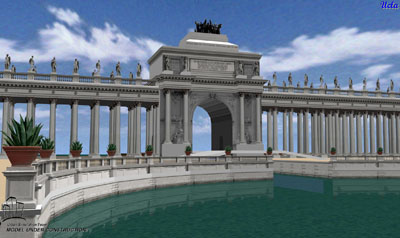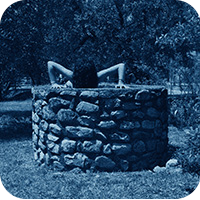Survival
Recently, coincidentally, I read two books with remarkable similarities. You’d not think there was much overlapping advice in How To Survive A Robot Uprising and Cheap Psychological Tricks for Parents, but the techniques for dealing with children and automata run amok are mostly interchangeable.
Test yourself. Which of these tactics refers to sugar-addled toddlers and which to killer cyborgs?
Stay out of sight
Individual ——– may be weak and dim-witted, but as word spreads the entire swarm will react as a single organism to engulf and destroy you. Kicking an anthill is no fun when the ants are the size of a pit bull.
Stay calm and seem uninterested
No matter how hard you try to make your point in your best stentorian English, no matter how emotional you get, ——– just looks at you with that “whatever” look.
To save a comrade: First merge, then separate
Run to a comrade, deliver a quick bear-hug, and then dive in a random direction. A ——– might temporarily lose track of your identity during the hug, especially if you are wearing similar clothing. You can gain precious seconds while the ——– reacquires its target.
Distance before familiarity
Brief exposures and slow movements toward the object reduce fear and create an atmosphere of familiarity.
Administer punishment within minutes of misbehavior
The ——– who sees the behavior should deliver the punishment immediately instead of waiting until the other ——– gets home to do it.
Memorize your lies, or be honest
A ——– has a stellar memory and laser-beam concentration. If ——– doubts your veracity, this menace may refuse to listen to any further emanations from your slobber hole.
Useful, eh? Doubly so for those of you who skipped the adoption route and built android children instead. Good luck out there.
Simulating a simulated city
One treat from my recent visit to UCLA was meeting the Urban Simulation Team. This small group develops detailed, precise 3D models of cities past and present for educational use, as a tool for urban planners, and even to facilitate emergency response. Their main focus is currently a complete modelling of the Los Angeles basin, but what really piqued my interest was Prof. Lisa Snyder’s “side project” to recreate the fairgrounds of the 1893 World Columbian Exposition in Chicago. She’s creating the White City — and doing a great job with limited resources.
While Leonardo di Caprio and Tom Cruise vie for the movie rights to Erik Larson’s wonderful telling of the story of Burnham, Olmstead, and proto-serial killer H.H. Holmes, Snyder patiently slaves away at the reconstruction with surprisingly scant documentation. For instance, we think of the buildings as being white, of course, which is supported by the monochrome photography of the period. But we know from architectural plans that the buildings were not uniformly white. The devil may have been in the White City, but he’s also in the details of recoloring it. Snyder has her work cut out for her.
Even in its half-finished state, the model is sublime. Viewing the fairgrounds from the gargantuan Ferris Wheel or from the elevated train or from Olmstead’s electric canal boats or from the futuristic moving sidewalk that jutted into Lake Michigan are all experiences not available with the strictly controlled photographic record of the city. The sense of scale is immediate. There’s a bleak majesty to it when you consider that it was all gone by the turn of the century. (Except for the refaced Fine Arts Building, now the Museum of Science and Industry — where, incidentally, I asked my then-girlfriend to marry me.)
I ride my bike in the area of the fairgrounds a few times each summer. There’s some historic signage and some replicated statuary, but the landscape itself is really the only place you’ll find evidence of the Expo. A long split boulevard bordering the University of Chicago marks the fair’s Midway (Snyder tells me that the concrete pads the Ferris Wheel rested on are still there, beneath the park’s sod) and neglected lagoons are evidence of Olmstead’s triumphant carving of the waterways throughout the fairgrounds. As the UST recreation of the White City proceeds one can dream of integrating it into the landscape itself, perhaps as a location-based service offered through the Chicago Park District or, better, as an outside-the-walls extension of the Museum of Science and Industry. Mapping the virtual structures onto the shadows of the fair embedded in the landscape would be a moving experience indeed.
Thanky
Happy Thanksgiving to the US readership of this blog! Here’s hoping you get your fill of family, friends, and fowl.
And to those readers not in the USA thanks for reading. Here’s a list of places people have visited Ascent Stage from recently. I don’t know who you are, but I’m glad you stopped by!
Buenos Aires, Argentina
Vancouver, Canada
Beijing, China
Stockholm, Sweden
Silkeborg, Denmark
Valladolid, Spain
Pune, India
New Delhi, India
London, England
Santo Domingo, Dominican Republic
Kitchener, Canada
Mechelen, Belgium
Hong Kong, China
Fleet, England
Arequipa, Peru
Dusseldorf, Germany (Kraftwerk, is that you?)
Nottingham, England
Coventry, England
Montreal, Canada
Meet the Friendlies
China recently unveiled the sporting event pictograms for the 2008 Olympics. I’ve been a fan of these little icons since Australia somewhat amazingly created one for each sport using little more than boomerang imagery. Athens continued the trend of using culturally-specific imagery in the pictograms by styling each event icon as if it were found etched on the side of an ancient amphora. (What, Plato never played ping pong?)
But China has gone further, entering the realm of the awesome and bizarre. Meet the Friendlies. The five main mascots — Beibei, Jingjing, Huanhuan, Yingying and Nini — are endearing and meaningful (spelling out “Welcome to Beijing” among other things). It can’t erase the horror that is the Whatzit mascot from the Atlanta games, but it helps.
Their cuddliness is deceiving, though. The actual sport pictograms truly kick ass.

From left to right that’s the Modern Pentathlon, Taekwondo, and Shooting, also known as Plunder, Uppercut, and Make My Day.
More on Olympic pictograms and logoing:
The Graphic Design Olympics
A Mini History of Olympic Pictograms
Logos and Mascots
Dear Santa
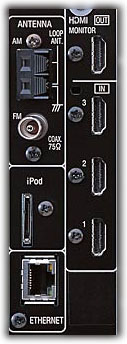
I know this is a lot to ask, but we’re a bit strapped for cash what with two kids and a nice mortgage rate that is about to become unfixed. Are you aware of the new A/V receiver from Denon, the AVR-4306? Obviously it is high on many people’s lists, but if you’ve forgotten, this is the one that finally is doing something with the Ethernet port on the back. Sure you can listen to Internet radio — big deal — but you can also finally treat your receiver as a network-controllable device, just like everything else on your home network. Need to re-route the DVD output, adjust speaker volumes, change the input to the trusty cassette deck? Just bring up the device’s web page and do it from any computer in the house or — if you’re really a control freak — from work or on the road.
So you probably remember it now and you’ll also recall that this puppy has two built in iPod ports, one in back for a permanent hookup and one in front for spur-of-the-moment guest DJ’ing like, say, at a party. (I know, I know, I wouldn’t think this would be useful either, but some friends of mine have an iPod dock built into the wall of their kitchen and let me tell you it makes for an outstanding get-together to be able to have guests pop their ‘Pod’s into it. Trust me.) Once docked the iPod is controllable just like everything else from the unit’s web page. Oh, and another thing, there’s a USB port on the front for hooking up removable media. The AVR-4306 mounts the drive and reads the media for immediate playback. Oh, oh, and do you see those four HDMI ports there? Do you? Three in, one out. That’s the coup de grâce, the pièce de résistance, That Which I Must Have. (Is that greedy? Sorry. I’ve been good. Really.) This spectacle of modern audiovisual magic actually upconverts any video signal — composite, s-video, component, hell if you sketch it a picture it’ll probably try to convert that too — straight to digital HDMI for a single output to your TV.
Bliss, no? At forty-some pounds it’ll be a bit heavy to lug here, I admit. So maybe, if you agree that I deserve it (and, frankly, I’m unable to conceive of a scenario where you would not) then may I suggest using Fedex Overnight shipment? Preferably to arrive before our annual Christmas Party? Sure, you’re invited. Thanks!
Oh, my kids have a list for you too. But I’ve misplaced it at the moment.
FightAIDS@Home

Lots of great new things happening at the World Community Grid. It seems like it has been running for a lot longer than a year, but our first birthday just passed and we’re happy to announce a new project running on the grid to contribute to AIDS research. FightAIDS@Home uses computational methods to identify new candidate drugs to block HIV protease, a key molecular structure that, when blocked, stops the virus from maturing.
For the last year the World Grid ran the Human Proteome Folding Project, which has been providing scientists with data on how individual proteins within the human body affect health, enabling them to develop new cures for diseases like lyme disease, malaria and tuberculosis. Scientists now have descriptions of 120,000 protein domains that are critical to human well-being.
Also new is section for children at sister-site TryScience.org that explains the concept behind grid.
If you’re unfamiliar with the Grid project, it basically allows you to use idle processor cycle time (or share it with other apps) to conrtibute to large, distributed computationally-intensive problems. A great way to participate in meaningful research.
Yes, I’m still hoping for a humanities-related grid project, but it is hard to argue for limited resources when there are so many humanitarian and life sciences challenges to solve.
Spam of the day
“Smith & Wesson: The original point and click interface.”
Made me laugh. If only computers were as easy as guns, you know? You can pry my computer from my cold dead hand.
Hanging out in Bel-Air?
Just a reminder that if you’re in the area I will be speaking this evening at UCLA. Logistics here.
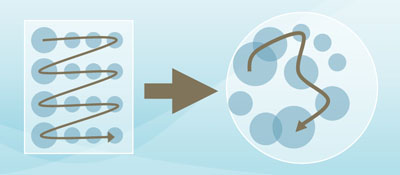
Artifacts from the Future: Experience Design for Cultural Spaces
November 17th, 2005 • 7:00 p.m.
Melnitz Hall Sound Stage 1 (Room 1451)
There’s got to be a better way
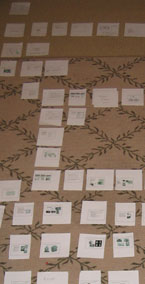
For me these days it seems that the task of creating a presentation is really an act of merging and culling prior presentations, then creating new material to stitch it all together. Powerpoint is awful at this. What’s really needed is a way to view multiple presentations (trying … hard … not … to … say … “decks”) in a single window with all available slides so that you can mix and match and group. Sort of like the thumbnail view but with the flexibility to arrange stuff non-linearly. I don’t think Keynote does this either. I end up printing it all out and arranging on the floor. The GTD people surely love this low-tech information design, but I’m not convinced software couldn’t solve the problem (and free up my kid’s play area floor space)
Tinderbox for Windows where are you?
More junk for your inbox
Those of you don’t use newsreaders and who hate coming to the site only to find it looking exactly like it did last time you checked may be interested in the e-mail subscription option I’ve added at the very bottom of the page. For the exceptionally lazy, you can avoid scrolling and subscribe here.
Check your junk e-mail folder for my upcoming posts on Viagra, mortgage deals, brazen teen nymphomaniacs, and East African investment opportunities.

